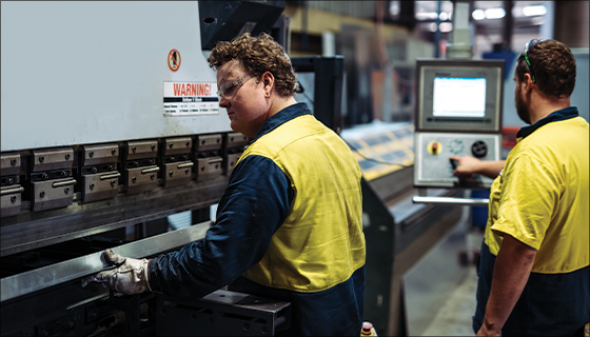
How Software Helps When Your Units of Risk Are People
Even within P&C Commercial lines, Workers’ Compensation insurance is a unique niche. The stakes, if not higher, are at least different when you’re insuring not buildings and vehicles but human beings. People. Can you imagine a more unpredictable risk, or one that contributes in more ways to your success?
That remains a question for another day, but there’s no debating that Workers’ Compensation insurers face a unique set of challenges at most stages of the insurance process, from assessing risk all the way through the claims process. So how can technology help?
Let People Work with People
When we use software to automate or dictate efficient processes throughout the insurance lifecycle, we free up human capital to work with customers and claimants. That can vastly improve their experience, which down the line is a good thing for renewals.
This is especially important in Workers’ Compensation, not only because people are complex but also because there are so many people involved in a claim—the employee who was injured, the insured, an adjuster, and any number of service providers—and because the fulfillment period is generally long and often unpredictable. When you’re fixing a car, you know with a fair amount of certainty when it’s fixed. This is definitely not the case with the human body.
Stay on Top of Dynamic Regulatory Requirements
Because Workers’ Compensation insurance regulations vary from state to state (and of course differ even more internationally), ensuring ongoing compliance with ISO, NCCI, state bureaus, and other regulatory agencies can be a complicated undertaking. Software such as Guidewire Product Content Management™ can help not just with the initial implementation but with the ongoing maintenance of these insurance products. That, in turn, gives insurers increased control over standards-based changes, and with that control comes the ability to accelerate product deployment and decrease implementation risks.
Streamline Risk Assessment
Underwriting and risk assessment are critical to ensuring success in all areas of insurance, especially in Workers’ Compensation. The larger and more diverse the workforce being insured, the more complicated the risk assessment task becomes. For this reason, automated underwriting is not likely to be a widely adopted practice in Workers’ Compensation insurance.
However, underwriting and submission intake technology (features of multiple Guidewire products) can free insurance workers to focus where they’re needed while streamlining the rest of the process. When technology does what it does best—data capture or rule and process enforcement, for example—experienced underwriters gain more time to accurately assess the risk at each account and make accurate, efficient decisions that will drive the business forward.
Manage Claims Data and Minimize Fraud
Workers’ Compensation may be the only P&C insurance vertical where the unit of risk files its own claims. This means that, while it’s completely normal for a construction professional to file a claim after breaking a leg on a job site, we wouldn’t expect a vehicle to file its own claim for a flat tire. Although that is obvious, what we may not think of is that the car also doesn’t have the ability to make a fraudulent claim. The insured company has that access in both cases, but Workers’ Compensation adds an additional person to the claims process, one who may not be familiar with the filing procedure or the rules governing it.
For this reason, both claims data validation and fraud prevention are areas where technology can be invaluable to a Workers’ Compensation insurer. Core systems like Guidewire ClaimCenter™ are critical to this kind of loss prevention, helping to ensure that claims are filed completely and accurately while also using system controls and predictive tools to identify potential fraud as early as possible. This is especially true when core systems are combined with a data and analytics solution such as Guidewire Predictive Analytics™.
When all is said and done, the job of a Workers’ Compensation insurer is to take care of people—not just the people paying for a policy, but also the ones making claims against it as well as the insurer’s own employees who assess the risk, provide the policy, and manage the claims. Workers’ Compensation is undoubtedly a people business, but there are many significant areas where technology can be a critical asset as well.
